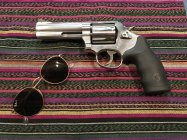No. DIN is DIN is DIN. The
only benefit to not being on the outer edges of a din range is not running out of adjustment as your weight, fitness level, agressiveness, etc changes. If you ski at 10 and 10 is the highest setting it will release at that value assuming all other variables are held constant. You may run into durability issues as lower din bindings are typically lighter construction. If someone actually skis hard enough and is strong and heavy enough to safely release at 18 there is nothing unsafe with using an 18 din binding instead of an even higher din racing binding (I don't even know if those exist anymore tho). Bindings are engineered and calibrated to represent the din that is stated by the indicator and manufacturing process checks are put in place to ensure that companies meet this specification. This is also why binding design changes are made so infrequently, there is a lot of engineering and legal investment made to ensure this spec is met.
https://www.din.de/en/about-standards/din-standards
You don't risk injury by using a binding at the ends of its adjustment. That is BS. Any shop tech that tells someone otherwise doesn't know what they are talking about. Shop techs are not professional engineers.
/endrant




